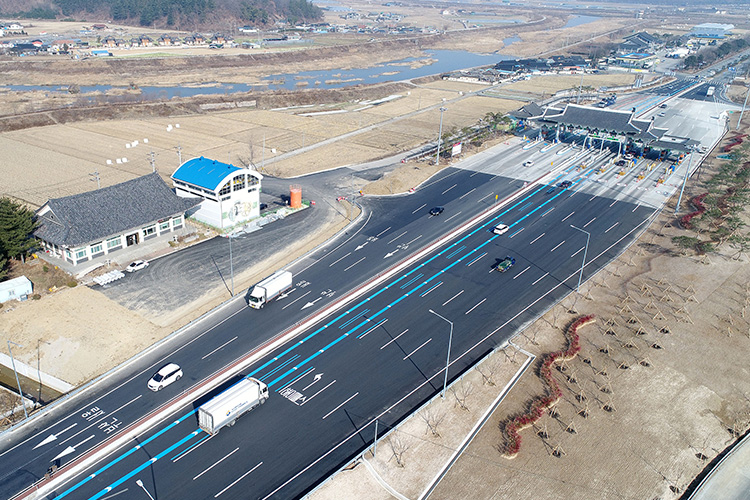| Project name | The Seoul-Busan Highway Expansion |
|---|---|
| Location | Eonyang to Yeongcheon, Korea |
| Period | 2011.12 - 2018.12 |
| Scale | Total length 10.9km, Breadth 32.6m, 10 bridges |
The Seoul-Busan Highway is the first and arguably the most important national highway of South Korea. It represents the main artery of Korea and the start of nation’s economic development. Along the route of this major freeway, sits two cities Eonyang city and Yeongcheon city. The area between the two cities has not been touched in 50 years. So it’s no surprise that their dangerously winding, old, and narrow roads along decrepit outdated facilities have been the cause of frequent accidents, and traffic jams.
It was up to Hanwha Corporation E&C Division to improve this important highway, appropriately labeled Route 1. It meant improving the area this national road straddled Eonyang city and Yeongcheon city. The expansion of the Eonyang ~Yeongcheon area involved increasing the number of lanes from 4 to 6, and improving the road course to significantly reduce traffic jams.
The expansion project needed to be completed without interfering the non-stop 24/7 traffic flow, so the proper work zones and traffic transitions were set up with all the temporary traffic signs, signals, and barricades to ensure the protection of the public, workers and equipment, day and night. During the 7 years it took to complete the expansion project, Hanwha Corporation E&C Division had zero accidents and this was attributed to the company’s expertise and experience in road construction.
THE GRAND SCALE OF SOC BUSINESS
- Improved road design, added more lanes to the of the Seoul-Busan Highway
- Added 2 junctions (JC), 3 interchanges (IC), and 4 rest areas
- Completed multimodal civil engineering works including 57 bridges (total 1,661m), 1 tunnel (185m), and 102 soundproof walls (total 48,312m)
- A large-scale, SOC project spanned 7 years and cost 800 billion USD
TRADITIONAL DESIGN
The tollgate designed to resemble the traditional houses of Korea reflects the rich heritage of Gyeongju city and the beauty of Korean traditional architecture.
The tollgate is 4.8 m in height to allow large vehicles to easily pass. The rest stops also received partial renovations to reflect traditional Korean architecture.


GENERAL PLAN & WORKING DESIGN
As society develops, people rely more on highways. We need to provide exceptional, linear designs to increase traffic convenience and reduce accident rates.
Understanding that the solution is not simply adding more lanes to increase traffic flow, Hanwha Corporation E&C Division developed detailed blueprints before beginning construction and came up with solutions that would truly improve the experience of drivers who use the highway.
CULTURAL ASSET PROTECTION
When Hanwha Corporation E&C Division discovered an ancient city from the Silla era including the Bangnaeri Tombs, roads, buildings and site relics during its cultural property/relics survey, it completely halted construction. Hanwha Corporation E&C Division proactively made provisions to protect the discovery.
The company worked with the appropriate local government departments to not only preserve the ancient historic site but took steps to promote it. Hanwha Corporation E&C Division initiated the work to make the site a cultural park and routed the Gyeongju freeway interchange around this cultural discovery.











